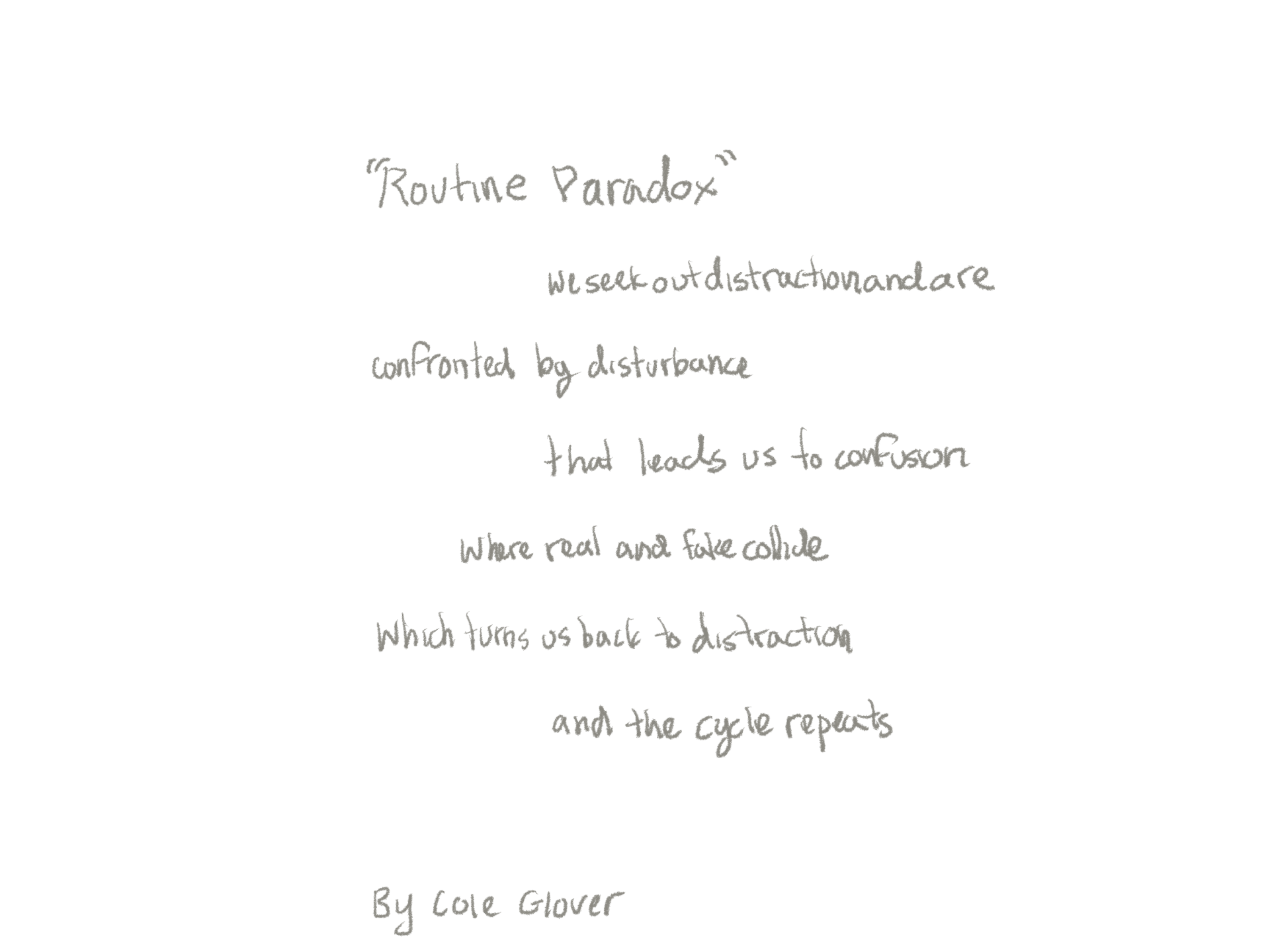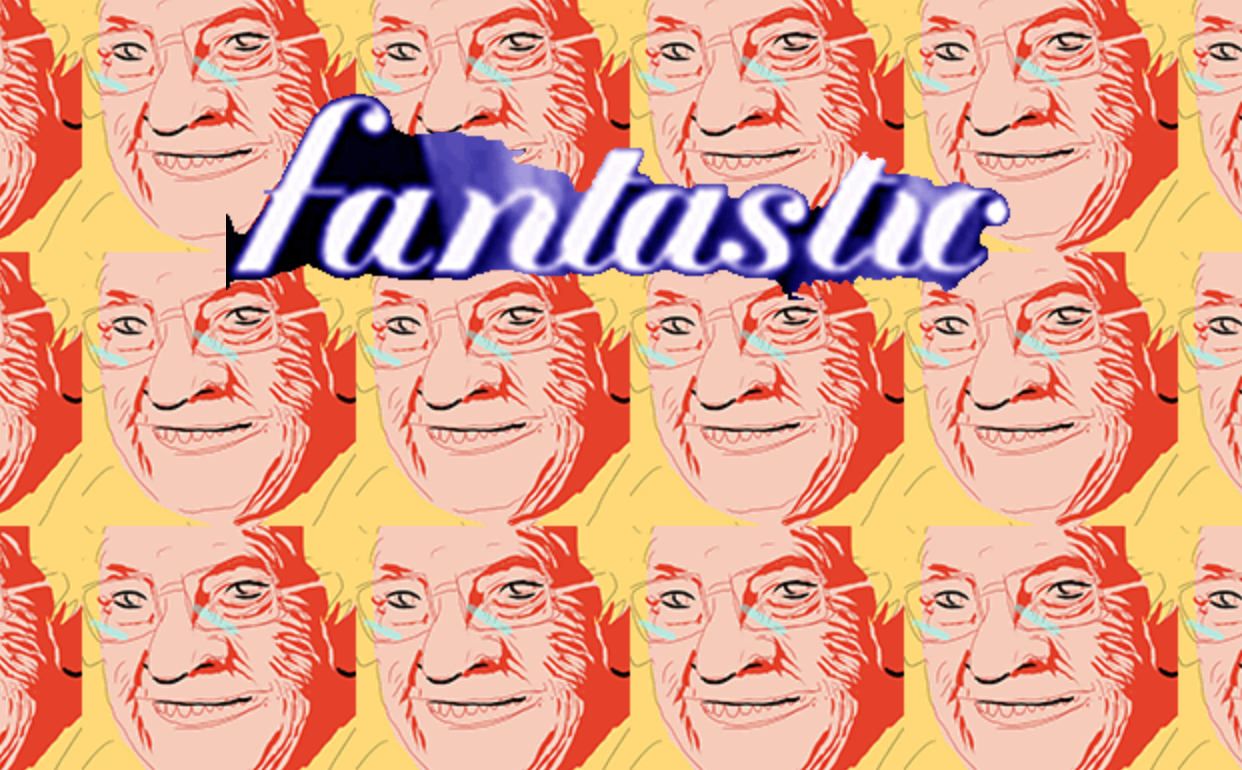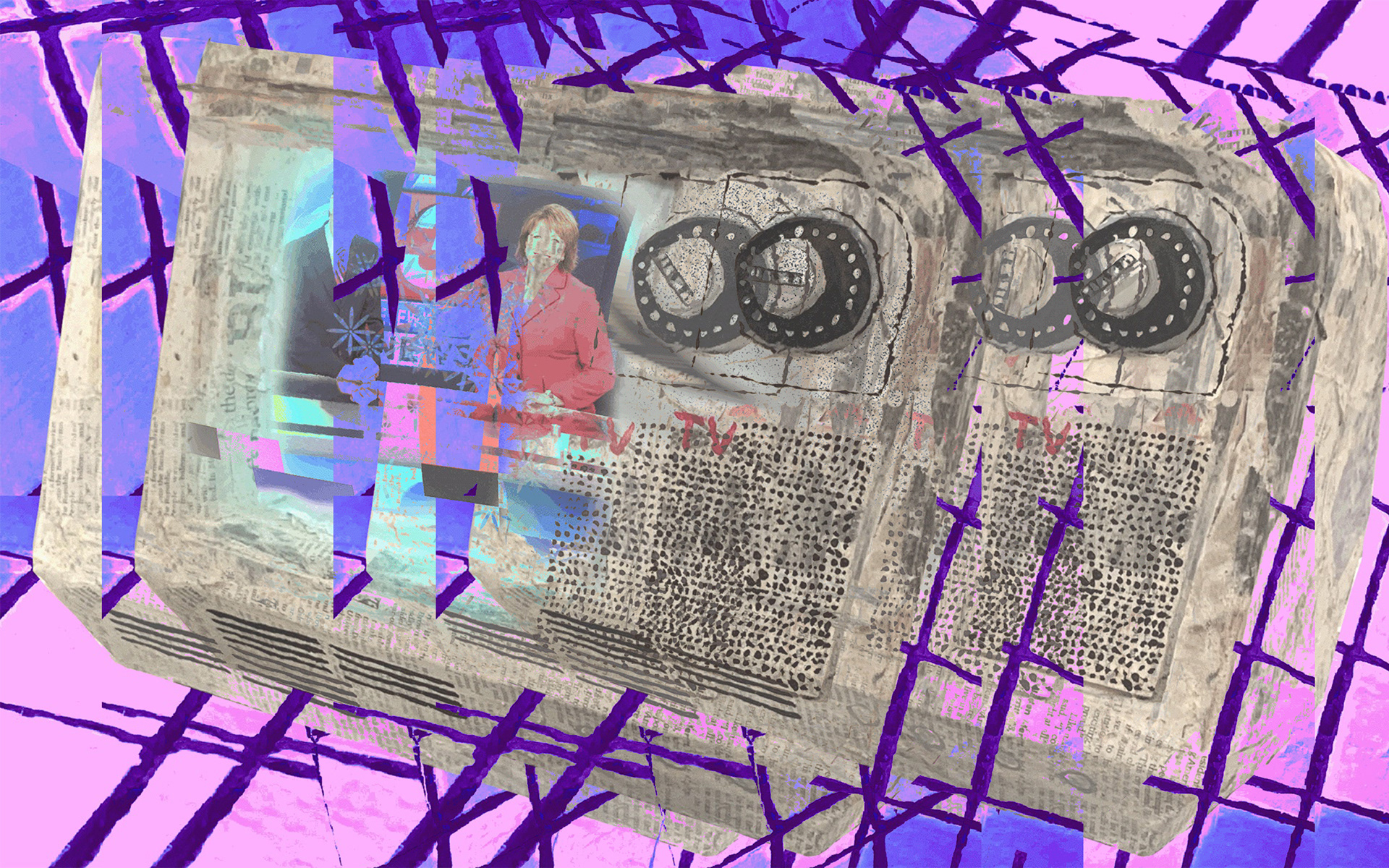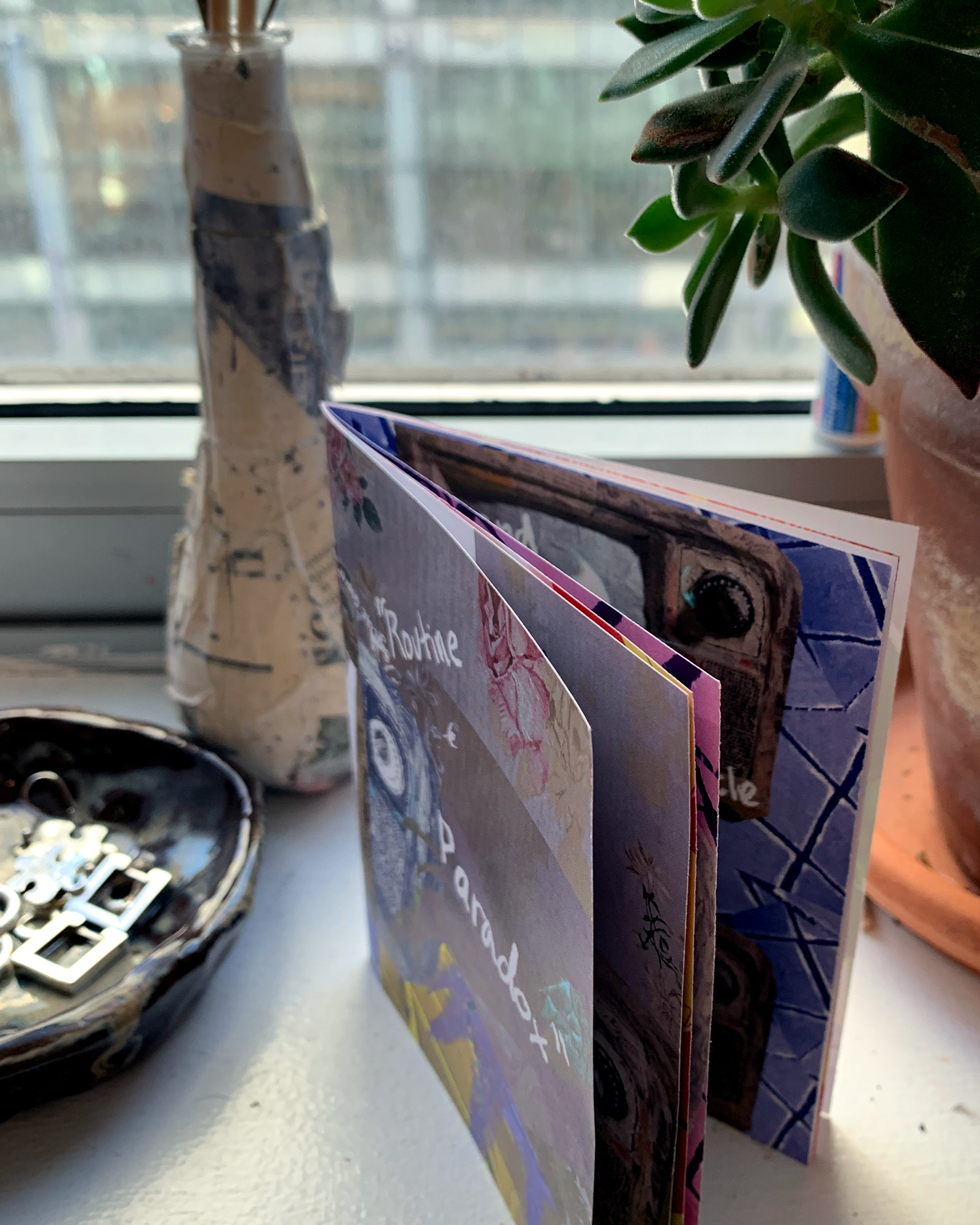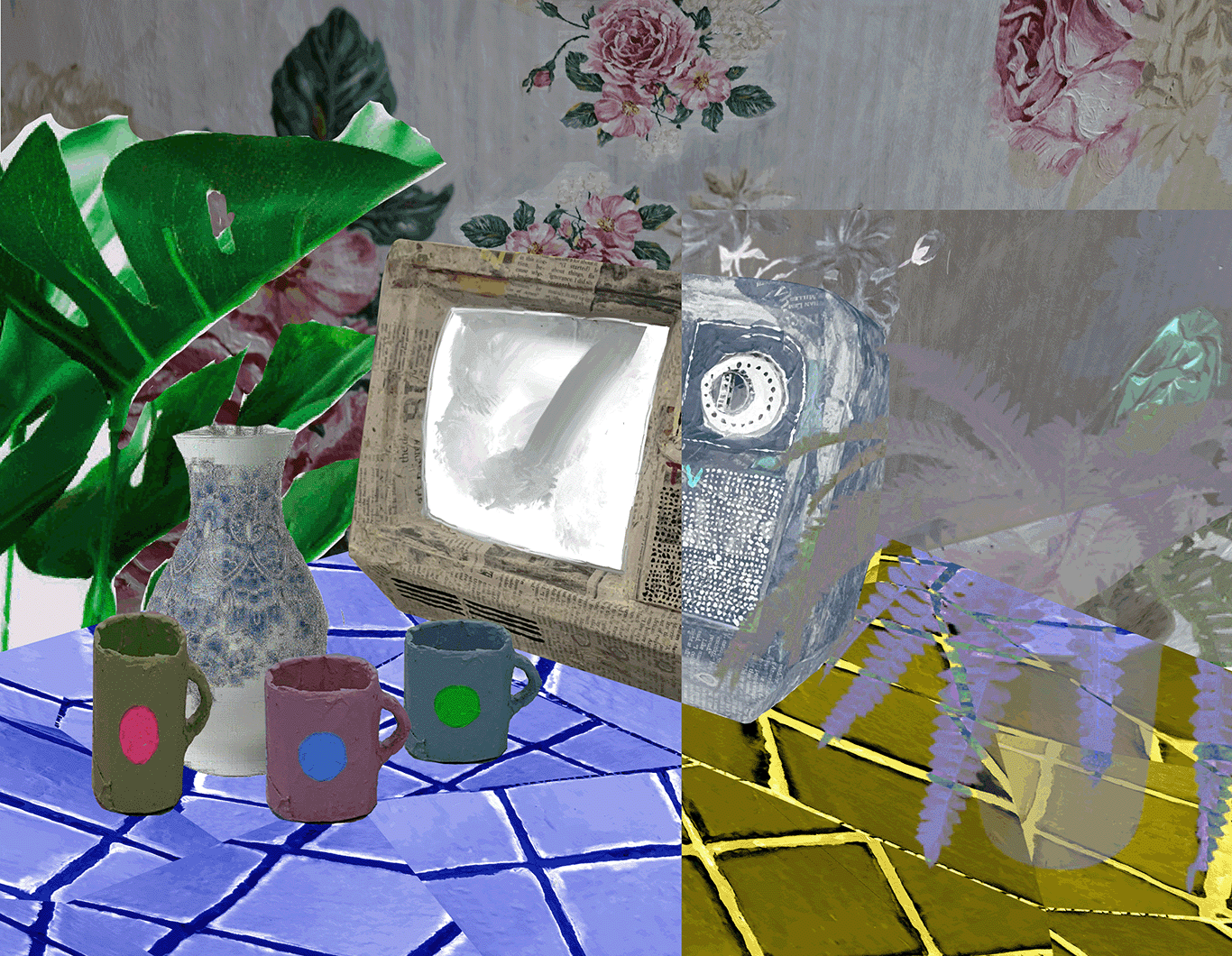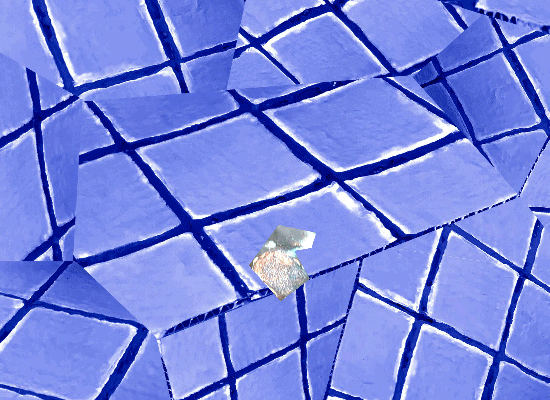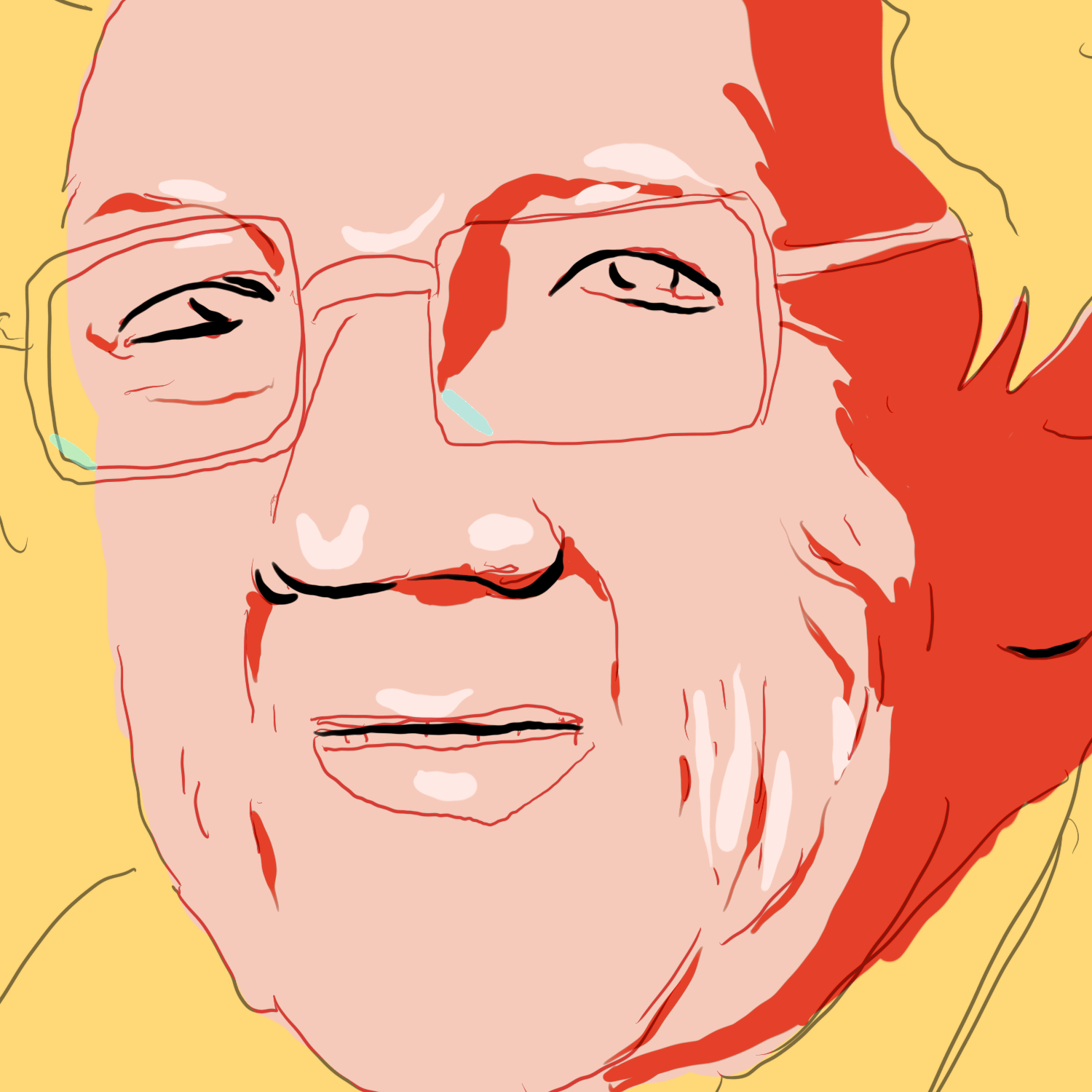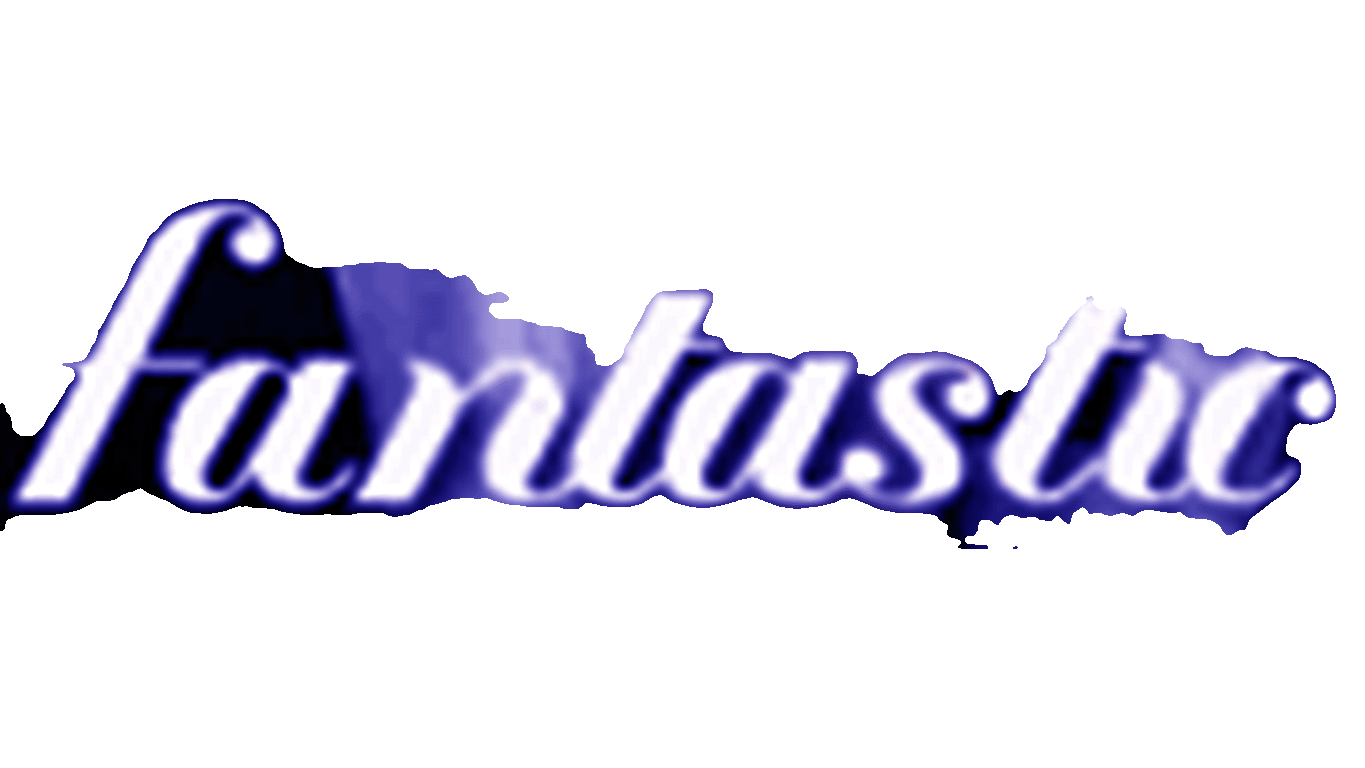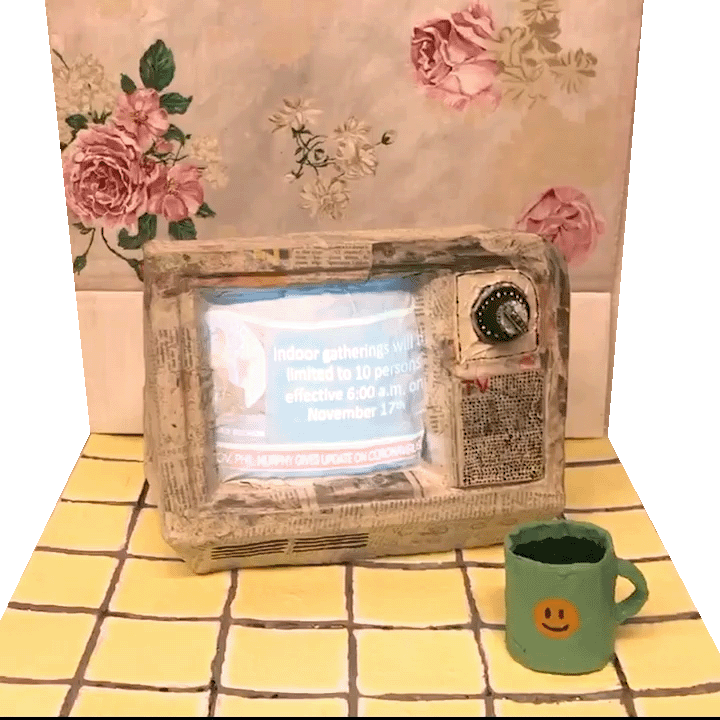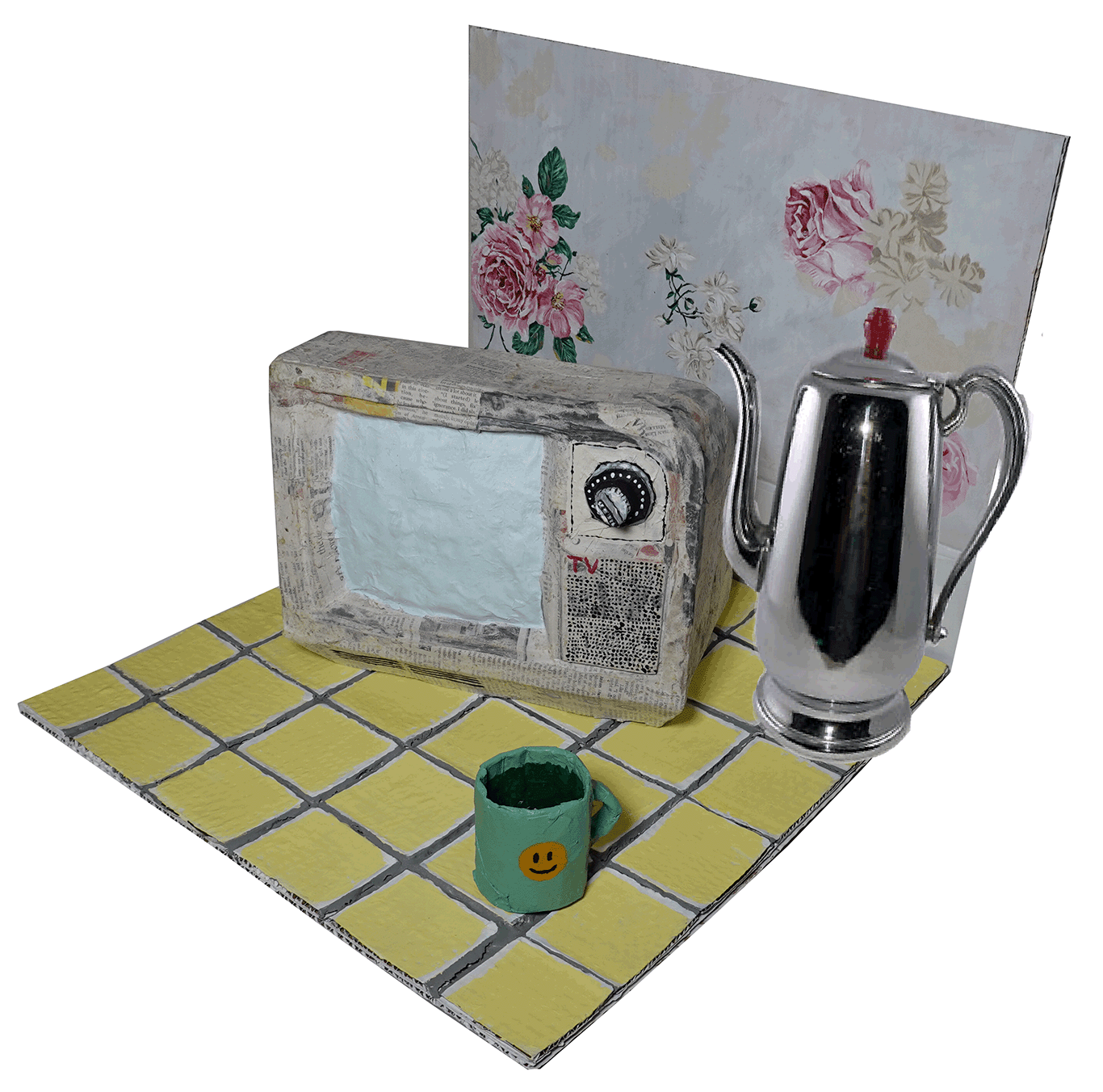The practice of selecting what is relevant to hear and absorb in the news was the focus of my research. It is possible to find online evidence to support any preconceived or misinformed idea. Instead of considering evidence and then drawing conclusions, it has become common to start with a conclusion and support it with articles that fit. If the information people want to hear is all they are willing to read, this practice works as a filter. Consequently, all unagreeable news becomes “fake”.
The way in which people digest information is heavily influenced by their environment and therefore, is informed by their biases. The final consideration of my project was to design and build the physical environment in which the news is delivered. The mood I elicited was based on the dichotomy of old and new. The out-of-date television, floral wallpaper, and awkward tile counter, create a historical feeling, while the messy, painted, paper maché evokes youthfulness.
A dichotomy is also demonstrated in the vintage set and the live, current, televised news. The highest voter demographic in the US is people who are 60+ years old. The way in which they vote ultimately affects the future of younger generations. This idea was largely influenced by my elderly white neighbor who complained that the news was too unpleasant to watch because of BLM protests happening across the country, the unraveling of COVID, and the current polarizing political environment. I thought about the privilege of these words, the ability to simply shut out the unpleasant, while still believing in the future of the United States.
The remixed website applies many of the same themes but also implies a paradox. The paradox relates to the deeping of extreme political views due to the process of selecting suitable information to believe. Through every opinion conceived on the internet, inconsequential to hegemonic, people form the way they see the world and in turn the way they act.
The button below links to the website.
